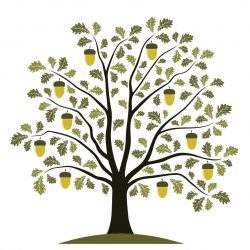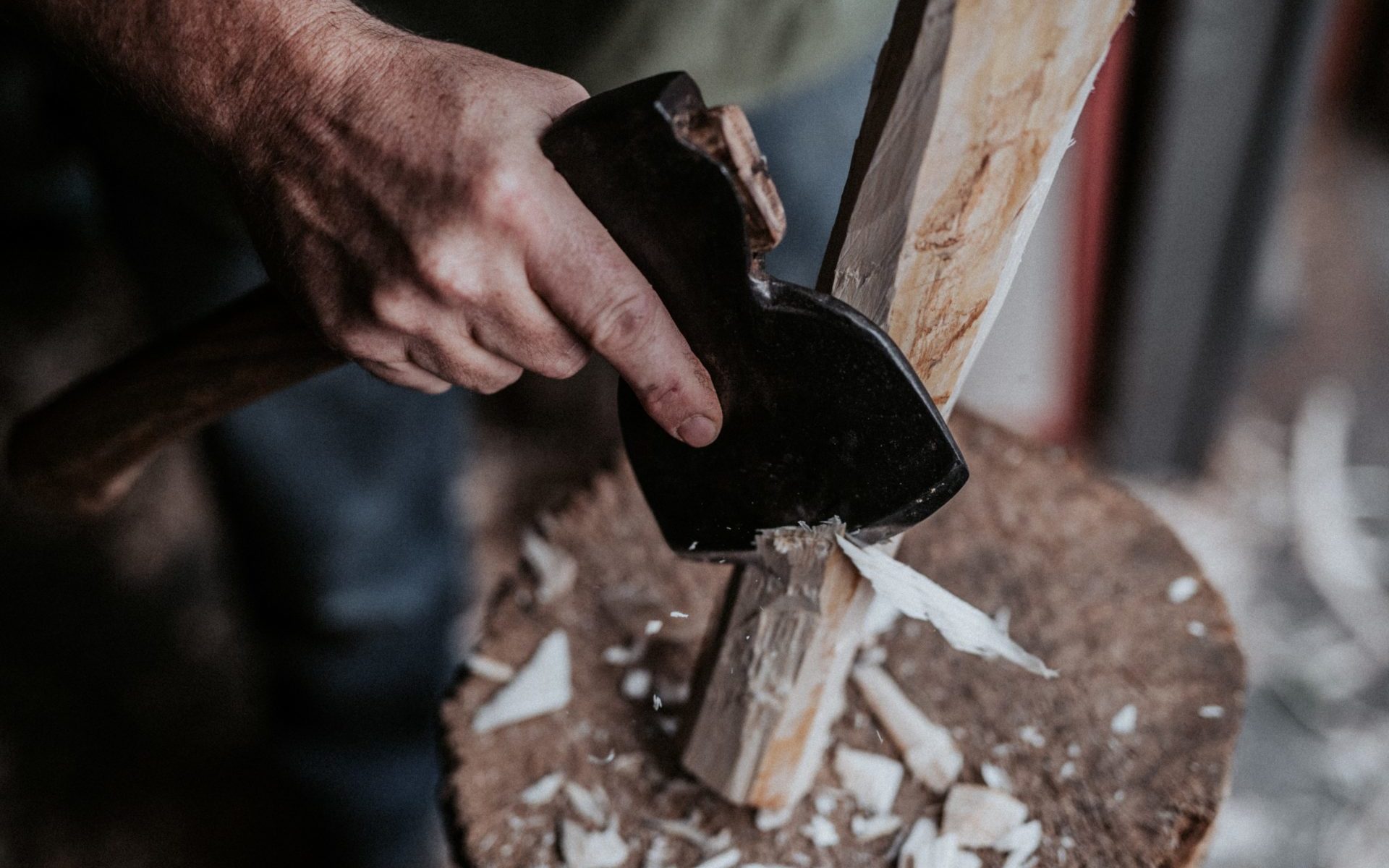All Greenwood projects start with the process of cleaving the timber, although the process really begins when the tree is selected and felled. This involves splitting the wood which is initially in the round (a complete log fully enclosed in bark). The split is made using an axe or froe and must run through the pith or original centre of the tree. This is done first on the round log then on each half to produce four even pieces, conveniently the number of legs or stretcher required for most projects. Splitting or cleaving the wood in this way ensures that although it will change shape as it dries it is far less likely to split than wood left in the round. These four pieces can then be further cleft or simply shaped on a chopping block using a side axe. A side axe unlike the other variety of axes available, has a single bevel on one side and is flat on the other. Using the flat side against the wood it is possible to shape a cylindrical billet from our wedge of cleft wood.
The next stage is to place the billet in the clamp of a shaving horse and use a drawknife to further refine the piece. It is important to bear in mind that the more care that is taken when cleaving, the easier the side axing process will be, and the more care taken with the side axe the easier it will be to use the drawknife and so on throughout each of the following stages.

